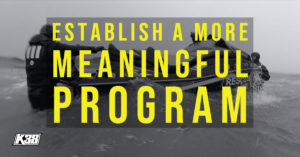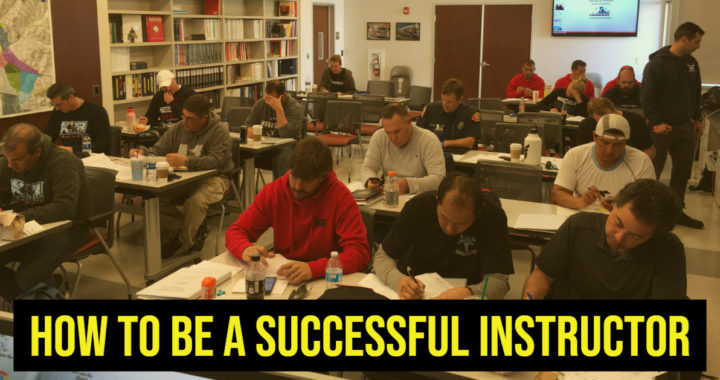What Makes a Good Instructor?
To be a successful Rescue Water Craft instructor first means that we need Rescue Water Craft experience. We have to learn from our previous mistakes we made, have field experience and we need to be trained by a competent leader.
But before we get on with that, what exactly is a Rescue Water Craft instructor?
An Instructor is a student, leader and a mentor. They have gone through a selection process and have been evaluated to possess the required knowledge base and use the supplies needed to host a competency training course.
They are able to prepare for a course, scrutinize themselves and their student cadre and to maintain the course records. They must have a thorough working and maintenance capability of all tools and equipment.
They have a safety plan and are prepared for emergencies. Most importantly they know when to say no in the field and stop forward motion to prevent an injury or accident. They do this by paying attention to the work flow, water and weather conditions, other instructors and the direction of the energy in the course.
They know when they have made a mistake, admit it and make the necessary amendments.

MANY INSTRUCTORS ARE TEACHING BUT THAT DOES NOT MEAN THEY ARE GOOD
A certificate of professional development does not ensure that holder of that document is an instructor. What decides that is the outcome, how the students respond, retain knowledge and perform, and what their future will become.
I would encourage instructors to take four classes a year, or critical assessments of their training presentations. That would cover the four seasons in a calendar year, keeping the skill and mind honed.
Have a good mentor. Ask to be in their audience.
If they give you permission, listen to them.
Give credit to your mentors. You are not special! You did not gain this knowledge on your own, you are a steward of it. Someday you may pay it forward.
Give thanks to what they invested in you, be grateful and humble. Humility is the first way to crush an edgy ego. But most importantly protect the seamanship skills that have been entrusted to you. Those go back to our ancestral times!

WILINGNESS TO LISTEN AND LEARN
We expect if from our students but we must first demand it from our instructor cadre.
• Know your training materials! This is the key to what your students are paying you to be in your audience.
• Seek peer review of presentations, documents or skills produced.
• Stay current with changes in the boating rescue world.
Be enthusiastic and learned about every aspect of Rescue Water Craft operations. Your position is one of authority and your coverage means you need to be ready to assist your students in succeeding.
You must be able to multi-task under pressure and still smile and enjoy the demands. You need to be good at logistics, reading the water and weather and keeping to a timed format. You are a water rescue counselor.
Do not assume everyone understand your descriptions. Define everything in terms that can help defend actions even under investigation.

Our Rescue Water Craft client lineage is based on the rotation of agency personnel, that is an average of 3 to 7 years of rollover. This means their knowledge base will be lost to the next generation and has to be fulfilled with new Coxswains. That is change and time and a significant investment for clients.
This also translates in to the Gold Standard of K38. We are on top of the training wheel because we are the most current at the helm.
Boating rules, laws and regulations are constantly being updated or changed. Personal Protective Equipment (PPE) is finally beginning a new trend of modernization, we have to stay in step with that. The Rescue Water Craft boat is changing EVERY SINGLE YEAR!
You need resources to lean on. Being in the digital age we tend to use the search engines for research.
However, you need hard copy books to have a readily accessible source library. For my research and knowledge base I often go to thrifts stores or search online books stores for old maritime books.
Be firm in your safety convictions and respect the role you fulfill. A strong training course is filled by a group of students who are engaged and asking questions, participating and deeply interested.
You are in a position of a sacred trust. People are depending upon your knowledge base. Their very lives rely upon it and so do the survivors they will be working on behalf in a perilous time.
Your interaction is about reputation; yours and theirs!
You students and mentors are a measure of success. Be sincerely grateful that they believe in you enough to place their valuable time, effort or invest in your capabilities.
Remember, it’s not all about you. Instructing is a sacred trust, its about what your students will do next.
__________________
Posted: September 1, 2019
Content Creator of Rescue Water Craft and Personal Water Craft boating international education standards: Shawn Alladio is the world’s foremost authority and leading subject matter expert. She cares most about her community and the culture surrounding the safety of event service providers and Rescue Water Craft operators, working hard and dedicated towards protecting their reputation, distributing safety information and continuing to train these amazing individuals to the highest standards of care.
__________
Have any questions? Join the Rescue Water Craft Association
and discover what your community is doing to modernize standards, safety and reduce liability!
Join the Rescue Water Craft Association
Use at your own risk. Please take a qualified Rescue Water Craft training course and maintain proper records and respect all the PWC, RWC, PPE, and gear OEM manufacturer warning labels and cautions.
